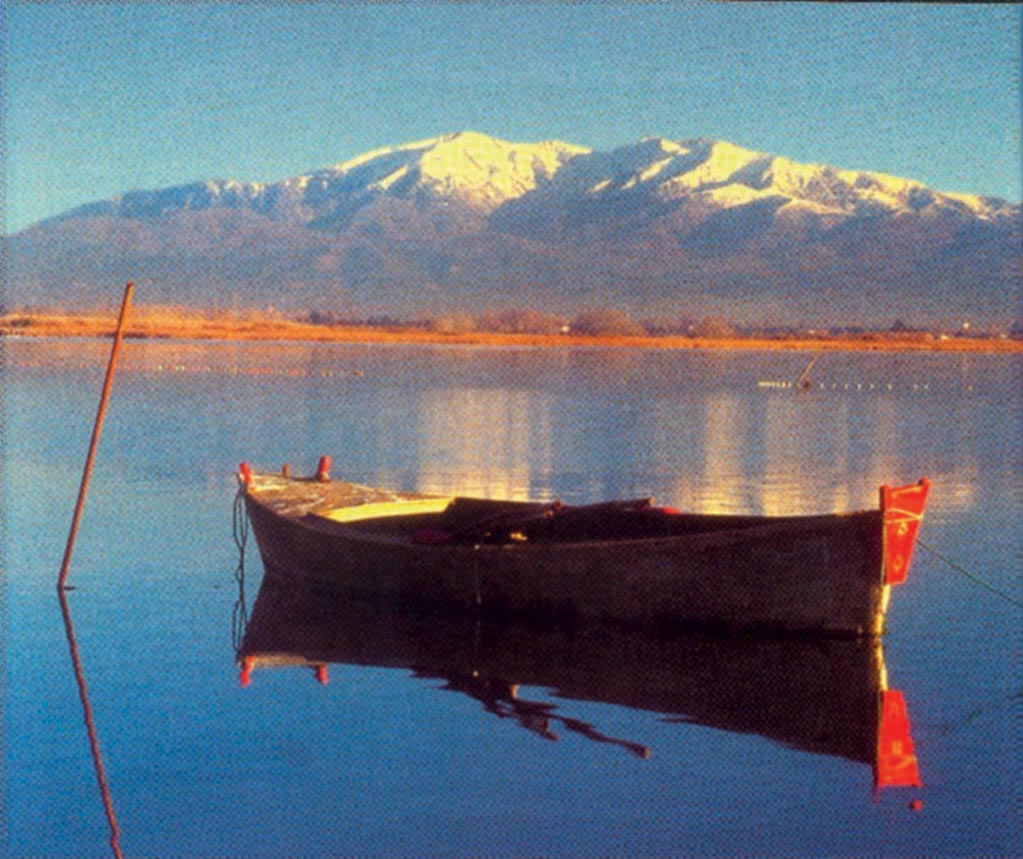What were the Visigoths like?
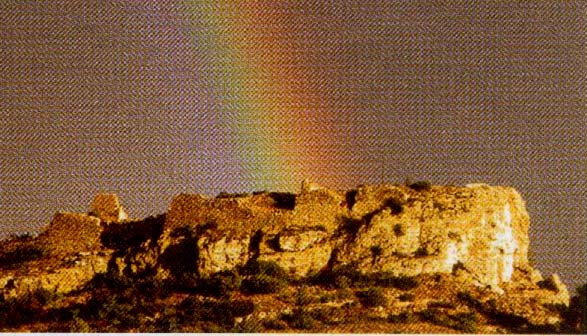
What sort of people were they?
They were in our region from 414 to 769, but the height of their powers in Gaul, including Aquitaine and the Auvergne, was in the reign of King Euric, from 462 to 484. So Languedoc was their home from 508 to 759, over 200 years, and yet these people are dismissed by history as "barbarians." This seemed to me unfair and facile; so I set to work out; what were Visigoths really like? What was their “mind-set”? We can understand people better if we can work out “where they are coming from.”
Before they came to France they worked for some 500 years alongside the Romans, gradually integrating and rising through the ranks, especially in the army. The Visigoths had a deep admiration for the splendour of Roman civilisation and way of life, yet they were more than a little priggish.
There was often an unspoken and sometimes teasing attitude between the Romans and the Goths. Maybe the Romans were sexually decadent, but they thought nudity could express great beauty. The Goths thought that nudity made a man look ridiculous; if you like, they were naturally Puritan. The idea that lounging about in sexual decadence makes a man a weak soldier is the sort of Puritanism the Goths embraced. They were a manly, warrior culture and prefered living in the open air to living in cities. They didn’t wash much . . .
Religion
Their first religion was what is called today, Odinism. They believed in a whole plethora of Gods and Goddesses and had quite a firm structure of belief about the universe. The world consisted of hell, middle earth and heaven, all linked by a magic tree, the World tree. It was on this that Odin hung for nine days and nights before discovering the runes and thus giving language to his people. The Norse Saga Havamal relates the ordeal. “I know that I was hanged on a windy gallows nine full nights, wounded with a spear. Neither with loaf did they succour me nor with horn. I peered down. I took up the Runes, screaming I took them, I fell back thence, freed.”
Odin gave language to his people . . . Compare this to St. John’s gospel; “In the beginning was the word . . .” The similarity - I am alpha and omega - strikes me very strongly, especially as the Visigoths seemed to incorporate alpha and omega onto their Arian cross - 4 arms of equal length, like the Greeks.
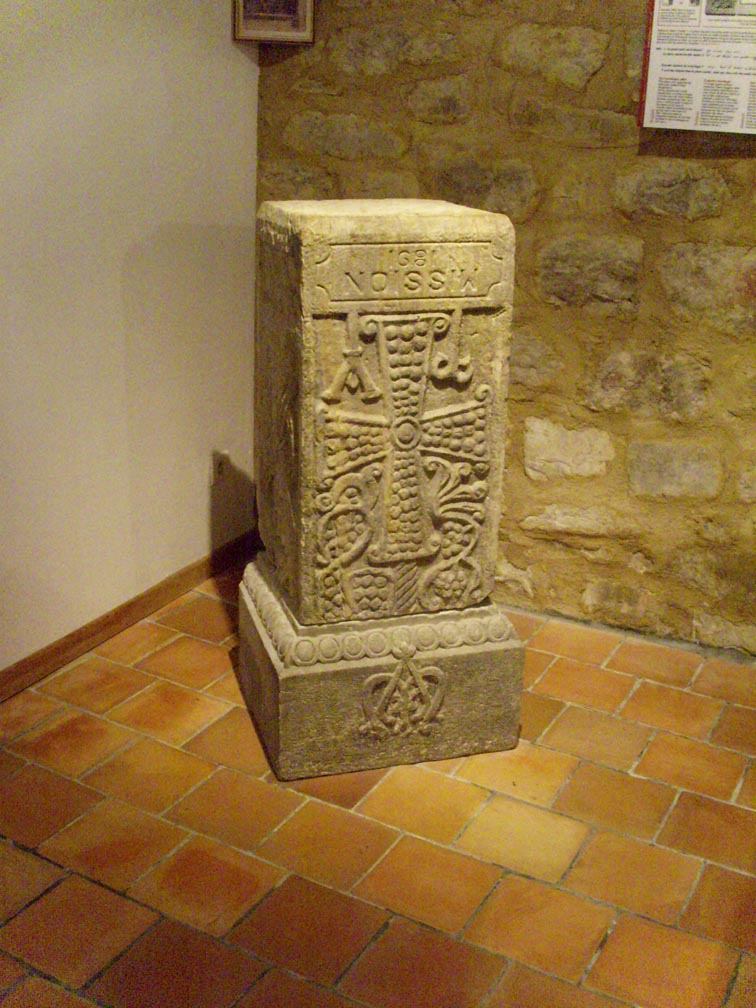
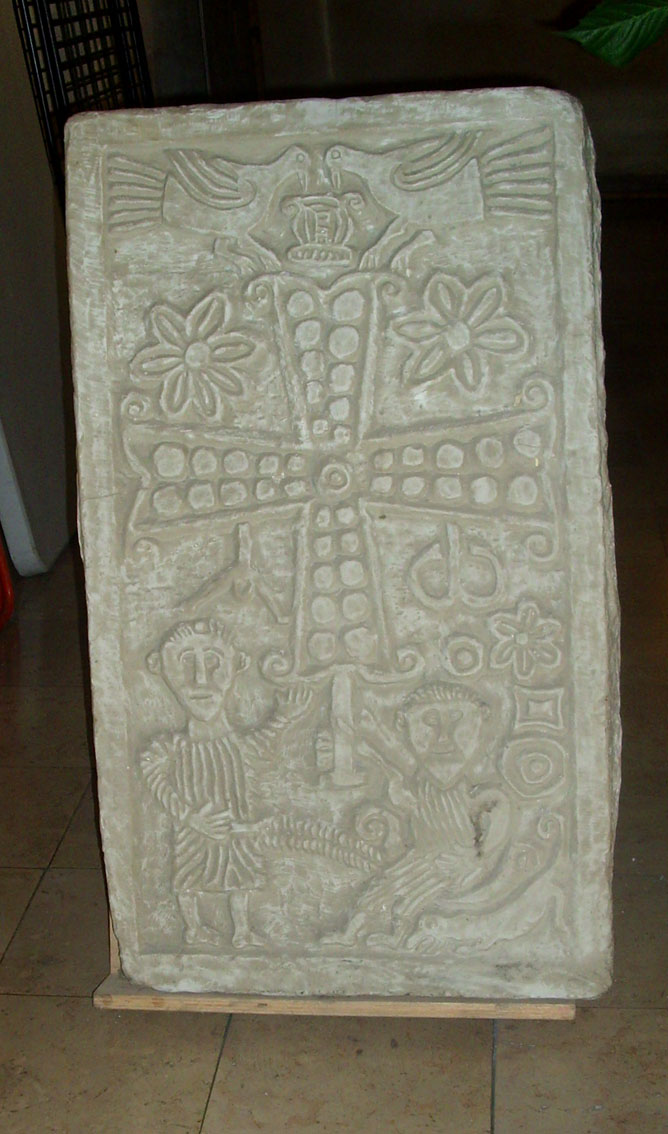
The Visigothic pillar found at Rennes-le-Château. The cross is called "The Cross of Silence" and you can see Alpha and Omega hanging from it. The second stone is in the Lapidaire museum, Narbonne. The Cross of Silence was held up in the air by the Arian priests leading religious processions.
Words and language is the main thing that differentiates man from the other animals. Language can be used to manipulate concepts at a metaphysical level and transmit information widely through space and time. The Nordic God Odin discovered language and gave it as a gift to his people, the Visigoths, roundabout 1,500 years BC.
St. John in the Christian New testament also says “The word was God and was with God.” Sometimes they translate “word” as “Logos,” meaning knowledge and the ability to communicate it and know it - gnosis. No wonder people say the Arian christianity of the Visigoths influenced the subsequent Catharism! For the Cathars loved St. John’s Gospel as their chosen religious reading – as did the Visigoths.
After integrating with the Romans the Visigoths heard about Christianity and became Arian Christians. Many people cannot see a connection between Odinism and Christianity, but it sometimes seems that both religions worshipped a man who hung on a tree - and even now in France the cross is sometimes depicted as being living wood with leaves growing out of it; a tree, rather than a cross fashioned out of pieces of timber.
The gods and goddesses of the old pagan beliefs were not very critical of their subjects. Unlike the Jews and the Muslims and rather like the Romans, there was no sense of fire and brimstone about their religion, little concept of sin. The Visigoths were great law makers and believed that a deal was a deal and agreements should be kept to, but one can hardy imagine them desperately praying for forgiveness for having heretic thoughts, for doubting God, for masturbating, or sins of that nature. You were expected to think for yourself in a framework of family values and loyalty to your tribe.
They had a strange attitude to death. The time of death was fixed so a warrior had nothing to lose by being daring, a sort of there’s-nothing-you-can-do-if-the-bullet’s-got-your-name-on-it philosophy. There’s hints that they believed in reincarnation, definitely a life of some sort after death, as well as the practical idea that what you left behind you in terms of reputation or family was important.
Nor did they think you should love your neighbour particularly or give everything away. To them a gift was something exchanged, not something one person freely gave to another without any hope of return. When it came to politics, they would go to a negotiation meeting carrying gifts and would except gifts in return. This meant to them that a deal had been made, for if there was in fact, no friendship or agreement, gifts had to be returned or not accepted in the first place.
Everyday life among the Visigoths
The Visigoths loved their animals; the number of cattle a man owned was a sign of his wealth, but a man’s horse was a personal friend. Happiness was described as a good horse. A warrior who died in battle would often have his horse buried with him and a horse’s skull would be buried under the floor of a new house to bring good luck. They believed that if lost at sea a seahorse would lead them to land.
For recreation people would meet up in a great hall and drink beer or mead (so they had bees). They used to play dice and, some think, chess. The skalds or bards would recite or sing daring and epic tales; it was often only the skalds who thus preserved racial history and memory, particularly of kings and chieftains.
Much of this was later written down by the Roman, Jordanès. He based his history of the Visigoths on their own legends recounted in song and rhyme. I speculated much on this way of communicating. The troubadours of France suddenly became visible in the Middle Ages; could this method of entertainment have somehow descended from the Visigoths? The Medieval troubadour culture was certainly limited to the region in which the Visigoths lived.
The Visigoths had scant respect for the written word. The Romans considered themselves educated; sometimes even slaves could read and write. They would often ask a Visigothic chieftain how he could be a chief when he couldn’t even sign his own name and the Visigoth would laugh and say, “What do we have Greek scribes for?”
To know a people one has to know the times that they lived in and the influences that surrounded them. I found a curious tale about the Huns, who were never Christianised but who did integrate eventually with the Germanic peoples who lived north of the Rhine. In the middle ages, in a place called Gastein, the Huns worshipped a great waterfall which tumbled down the mountainside through a narrow gorge. Every midsummer day the prettiest girl of the village was sacrificed by being thrown into the maelstrom at the foot of the waterfall. For the following year, the family of the girl was so honoured and materially favoured that, it’s said, there was great competition for the place of next year’s prettiest girl.
These sort of customs among “Teutonic” peoples would of course have affected the mentality of the Visigoths, at the time, for ideas never spring up from a vacuum. The Visigoths, as we have seen, loved underground rivers and water. While it was the Romans who initiated the water sports, now residual in the jousting at Agde and Sète every summer, the Visigoths continued it. In France many aquatic sites still harbour divinities and goddesses. The most celebrated goddess is the siren, but she is also called Ondine or Mélusine. The siren has the upper body of a beautiful young woman with long golden hair, but her lower half was a serpent’s tail covered in shiny silver scales. She was half woman, half serpent, just like the mermaids (who were adapted from the river goddesses of the Visigoths.) The sirens were vain and are often shown admiring themselves in a mirror; or in the mirror-like surface of a still and silent lake.
A mountain people
The Visigoths loved mountaintops. At the time of the summer solstice, great bonfires were lit on mountaintops all across Sweden and Gottland, dedicated to their God, Balder, who was the Sun God and adored by all. Many modern followers of Odinism say Balder represented purity and light.
Midsummer bonfires on hilltops are well known in France and throughout Europe, and are still known as Balder’s Bonfires. It’s my belief the Visigoths brought this custom to Languedoc, and it still exists in the St. John the Baptist day celebration on top of Mont Canigou, the sacred mountain of the Catalans, and the firecrackers set off in village fêtes on that day. The Christians made Midsummer’s day John the Baptists day, because of the connection with both fire and water.
But it’s more complicated than that. In his book “The Holy Place” Henry Lincoln discovered the geometry of pentacles in the district surrounding Rennes-le-Château. He found that lines (on the map) linking mountaintops and the hilltop villages on some of them, many of which like Rennes had been founded by the Visigoths, traced out pentacle shapes. He claimed that a “great master race” had done this deliberately as a celebration of the great goddess, Venus, whose sign in mysticism is still a pentacle. He never thought this great people could be the Visigoths. He didn’t know about their midsummer bonfires on mountaintops.
Then I remembered how the Romans had used mountaintop fires as a way of communicating good news or bad news. It’s said they also built their roads dead straight by using fires on hilltops; the workers built the road in a straight line towards the hilltop. Thus Roman roads never ran all round the tiny villages of France but proceeded across country by the shortest route in miles. King Euric, we know from history, protected Rennes-le-Château by building various towers around it that could signal to each other. Rennes-le-Château was the Visigoths’ hideaway and retreat; at one time they heavily fortified the old city of Carcassonne for their Royal and Sacred treasure was there. It was essential therefore that these two places could communicate with each other.
Between them is the hill on which is St. Salvayre with its tiny church. From there you can see Carcassonne - my friend Patrick goes there on Bastille day for a grandstand view of the fireworks at Carcassonne. And if you draw a line on the map from Carcassonne, to St. Salvayre, and then continue it, it goes straight to Rennes-le-Château.
Eric’s fortifications were practically invisible; he simply built villages on hilltops so they could communicate with each other by fires or signalling with a mirror. Thus, if any enemy was approaching Rennes-le-Château, the news could be communicated to the secret citadel well in advance of any sighting of an army. Yet many modern writers of the mysteries of Rennes-le-Château seem fascinated by the fact that Bérenger Saunière could go up his Tour Magada and see all the villages roundabout. Of course he could! Rennes was founded by the mountain loving Visigoths!
All these “pentacles” were simply part of the Visigothic defence system, and studying their ancient religion gave me the clue to work it out.
Are YOU of Visigoth descent? How to tell
The Visigoths were a race or tribe that originally came from Sweden but specifically from the Island of Gothland in the Baltic Sea. The had specific physical features. They were tall and big-boned with reddish hair. They had blue or greenish-grey eyes, long earlobes and long chins. In later life they could run to fat and often developed a paunch. The Royal family of France, especially Eleanor of Aquitaine and her son, "Edward Longshanks," who became the King of England, were of Visigothic descent.
Here in the Languedoc, at any meeting such as a village fête, I noticed that some 10% of the population would be as much as a foot taller from most of the people, who were often small and dark with "black" eyes. Then I started seeing photos in the press and would say to myself; "He's a Visigoth!"

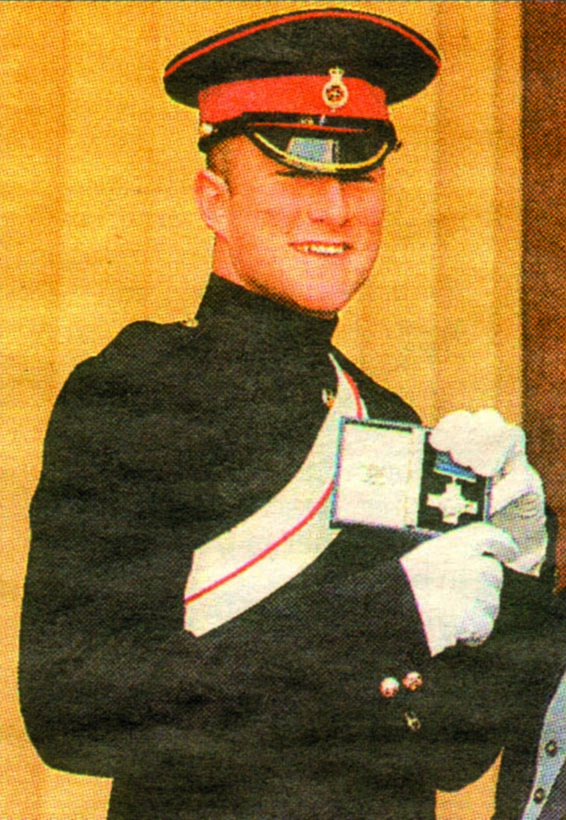

The first is Goran Tropp, a Swedish mountaineer. He arrived at the foot of Everest on a BICYCLE with all his gear stowed in a bike-trailer behind it. Then he climbed Everest. He stayed at the top only 4 minutes because he could hardly breathe - and what did he do when he came down the mountain? Well, he cycled back to Sweden of course. Honestly this is a true story, I have the cutting. One day I met some people on the train from Carcassonne to Couiza. They knew all about Goran - he is still a hero in Sweden, many years after his death.
The second man is British, he received a medal from the Queen for saving the life of his friend during military service. In the original photo he is a foot taller than his friend and look at that chin! The third picture shows the beloved French film star, Gérard Depardieu, incredibly energetic, with his strong personal life, all his films, his vineyards in Languedoc and now, he has taken up cookery and restaurants.
And drinking just for fun.
Inscrivez-vous au site
Soyez prévenu par email des prochaines mises à jour
Rejoignez les 21 autres membres

